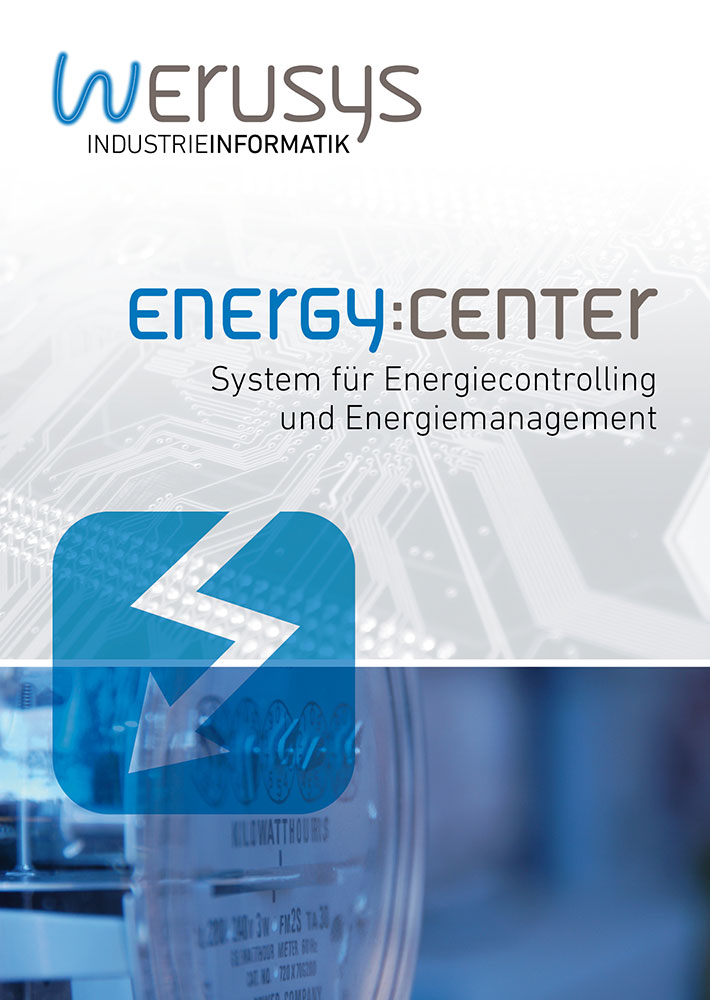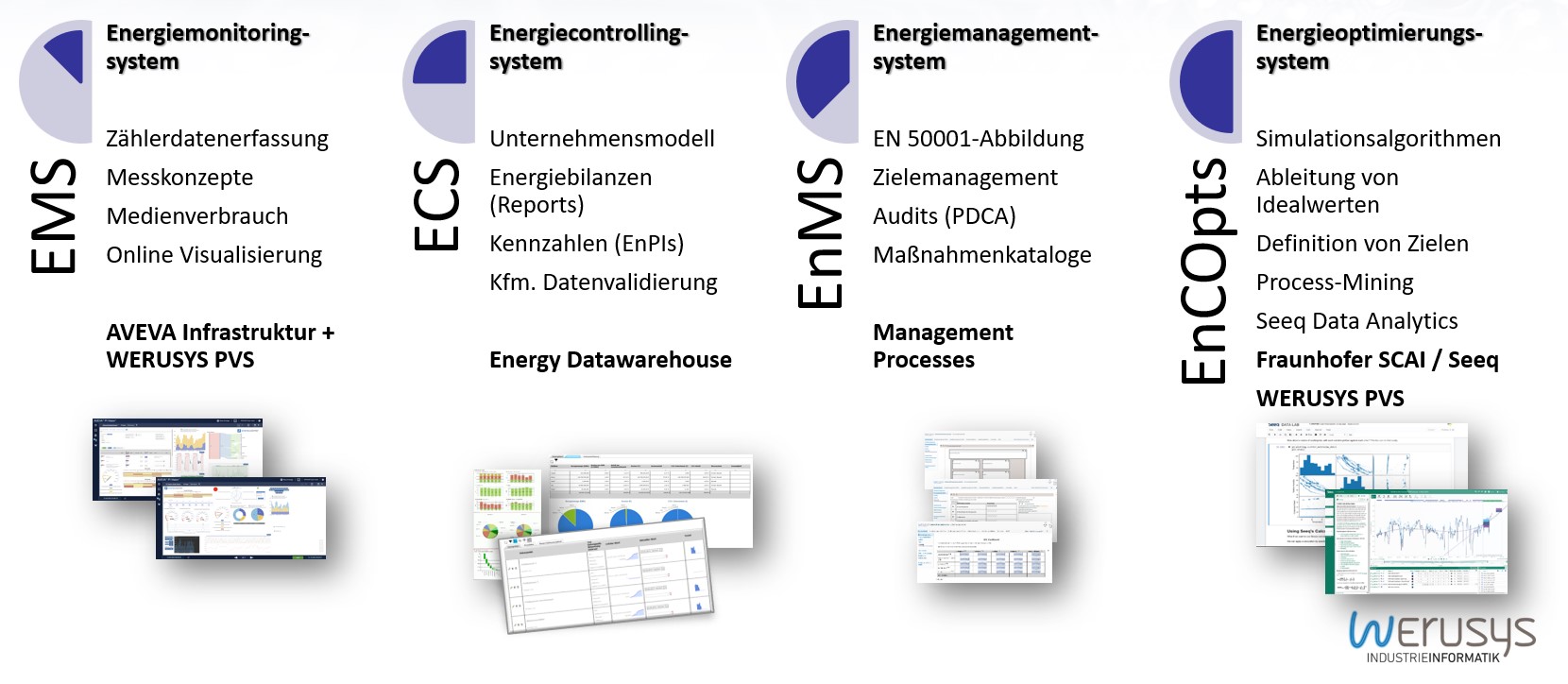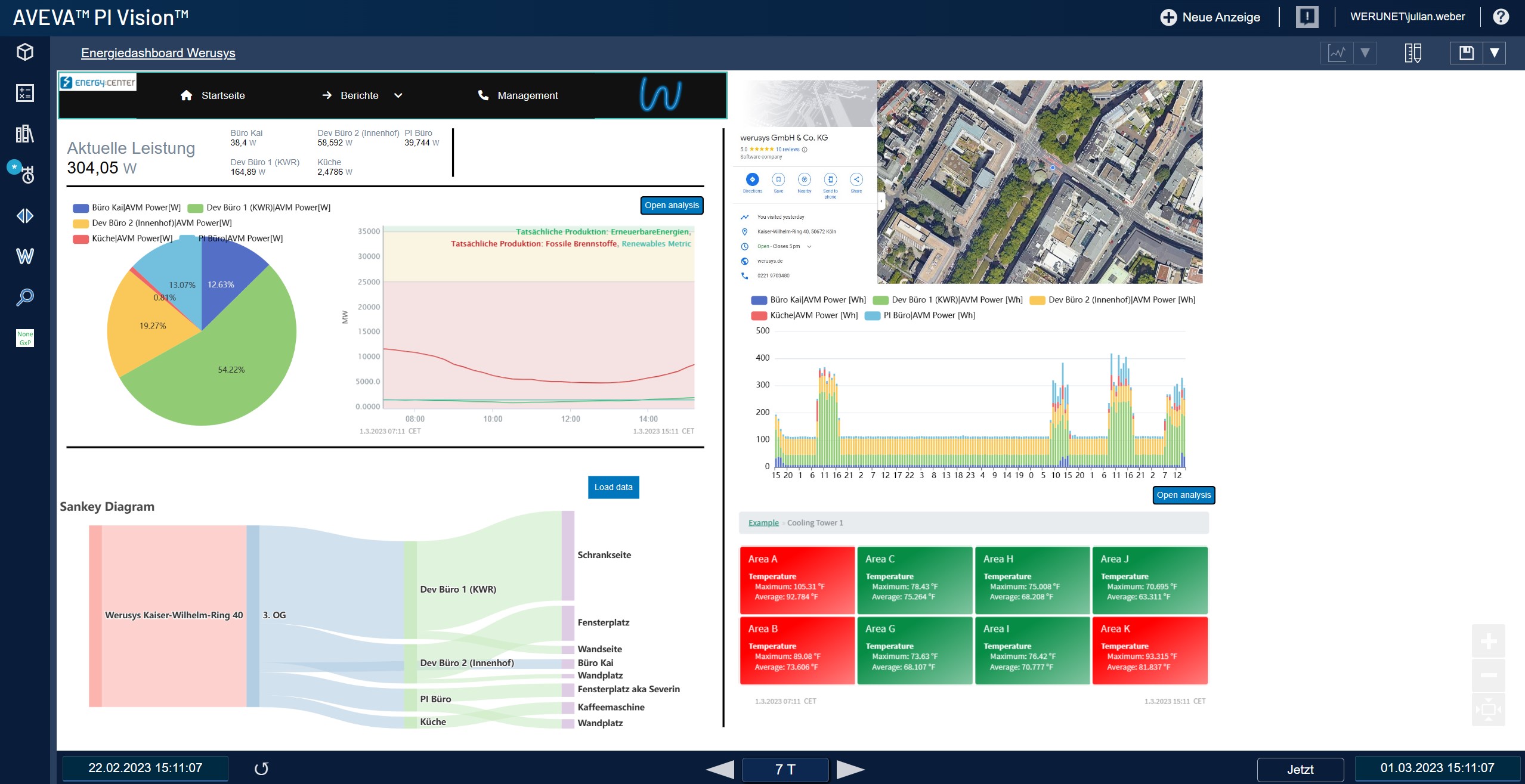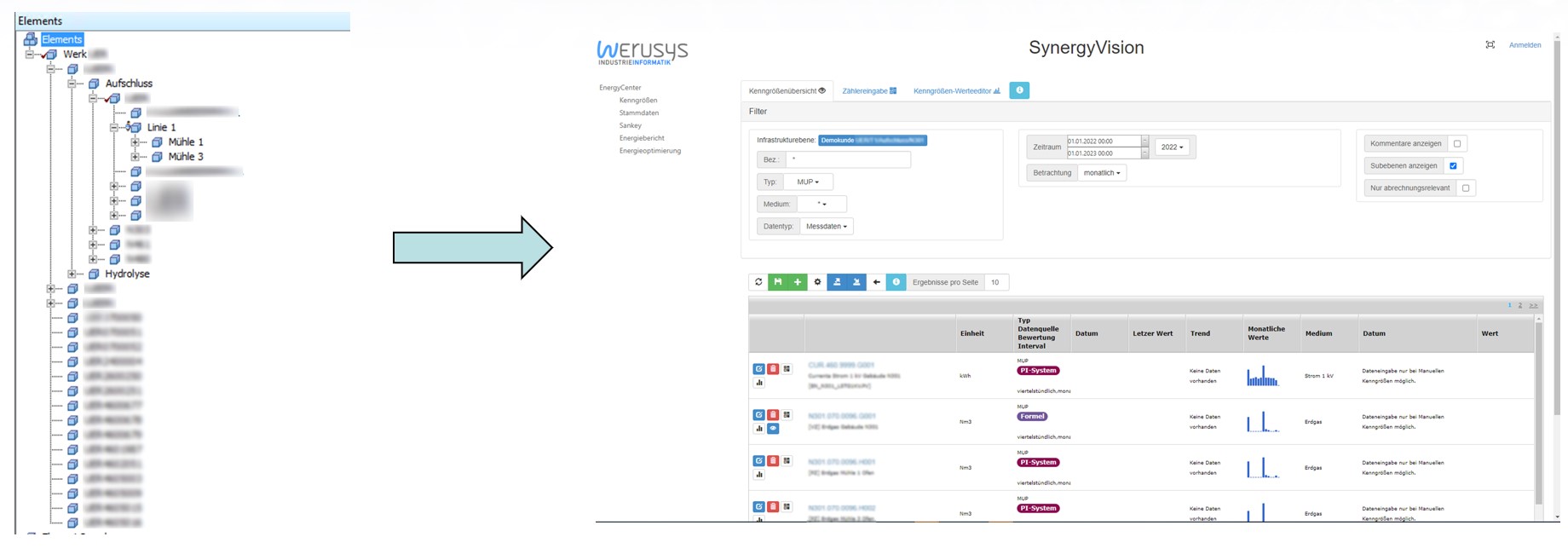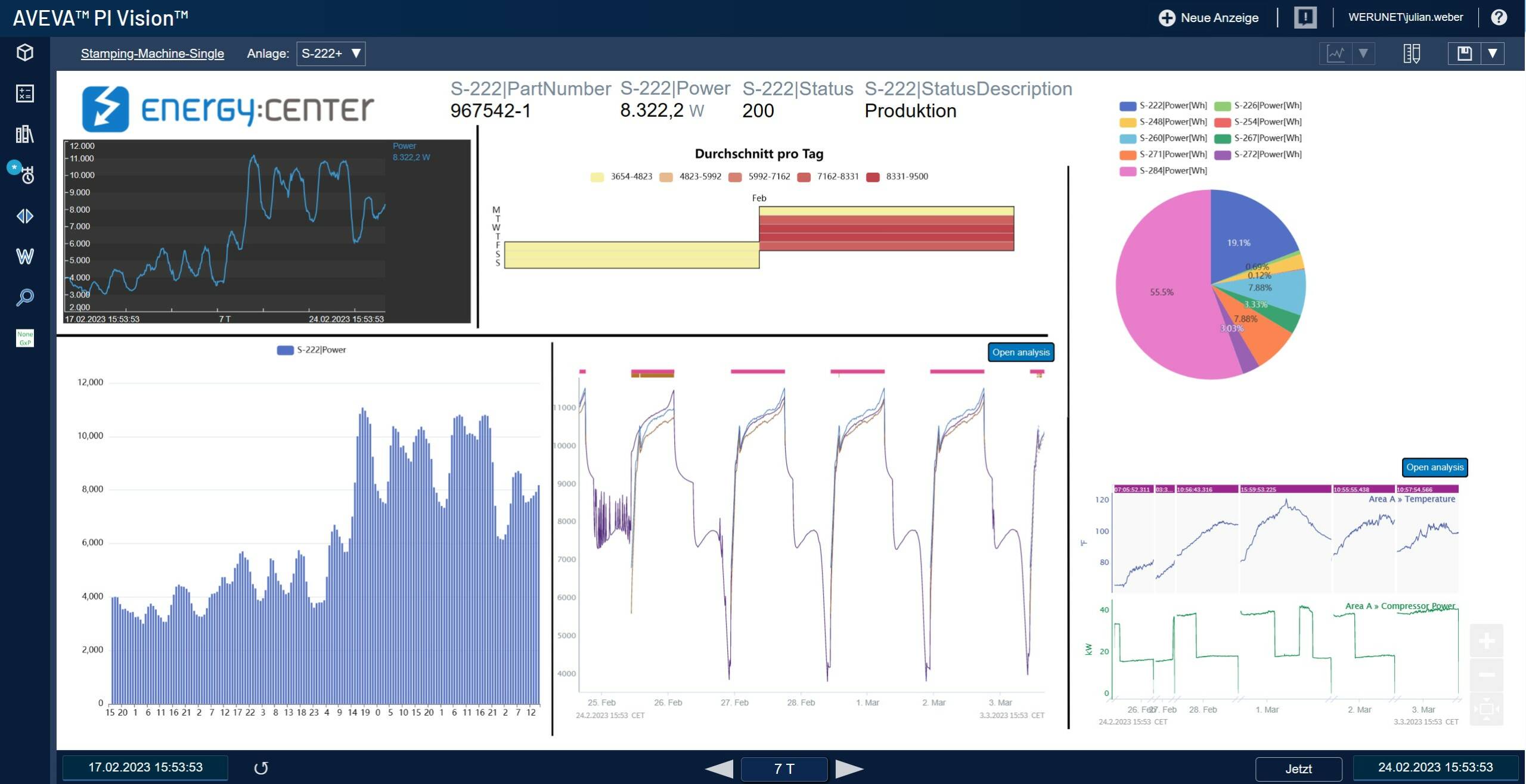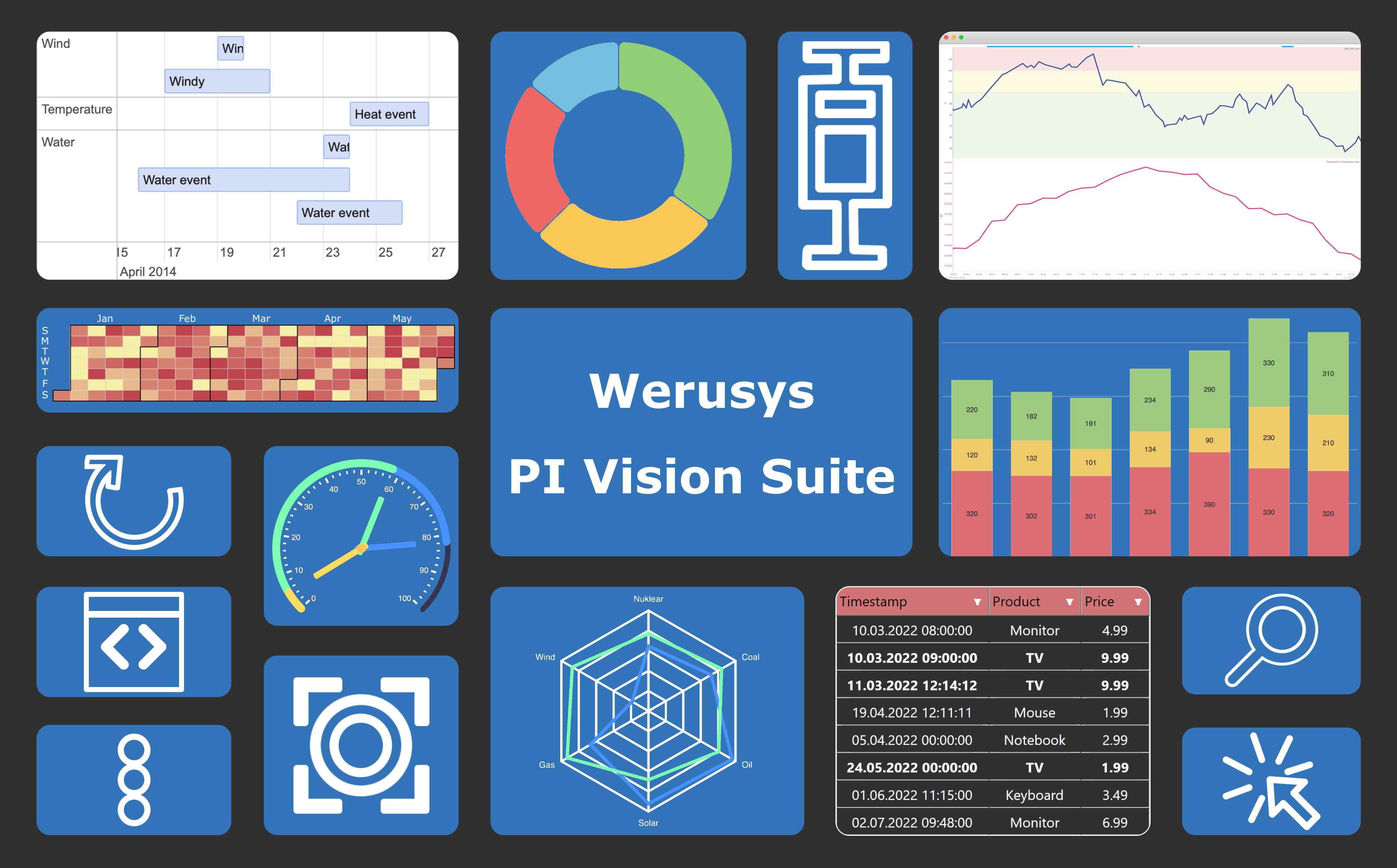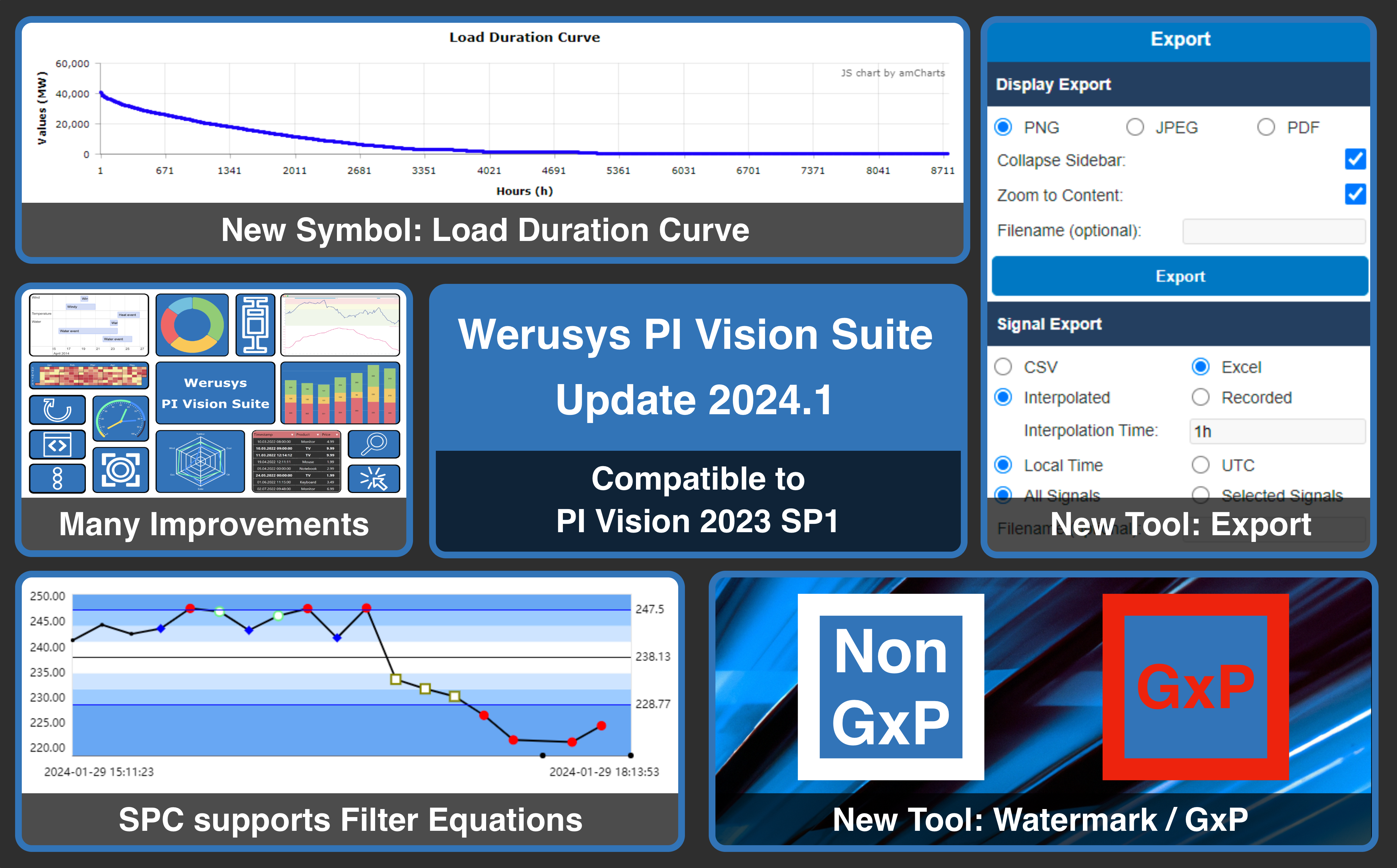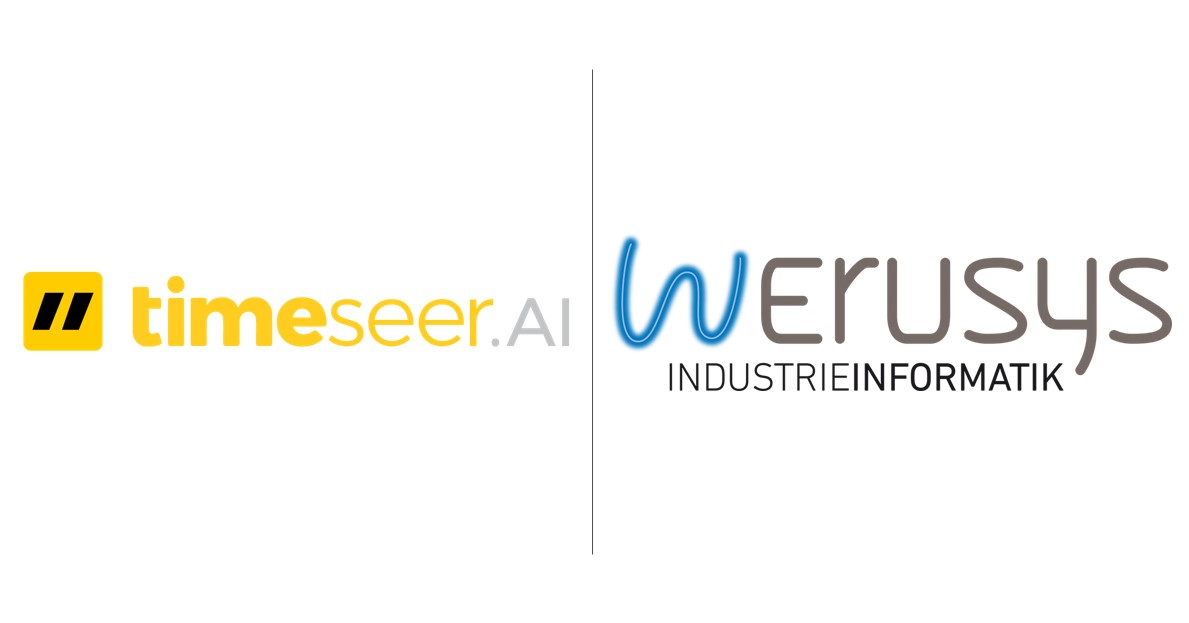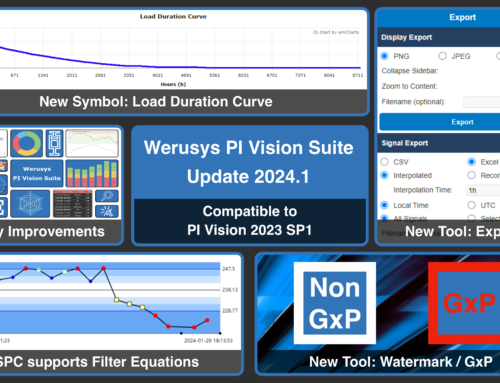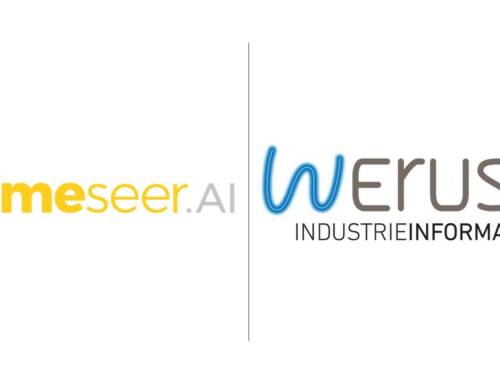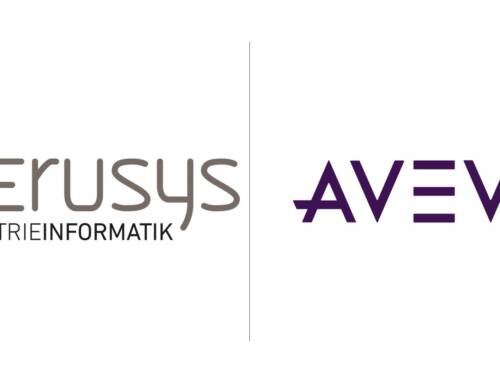Sustainable through data use
In version 2023.1, the energy:center has seamless integration into the AVEVA PI system. By extending the possibilities of PI Vision, detailed and clear energy monitoring is possible. Overall, the Werusys energy:center is divided into four main areas. Energy monitoring, controlling, management and optimization.
Energy prices are on the rise. Due to geopolitical tensions and an increased global energy demand the prices for energy are rising like never before. Another critical factor is the climate change. The need to reduce greenhouse gas emissions and mitigate climate change has led to a shift away from traditional fossil fuels towards renewable energy sources, which has created a period of transition and uncertainty.
The PI System can support sustainability initiatives in several ways, including:
- Energy management: The PI System can be used to monitor and optimize energy usage, identify areas of energy waste, and reduce greenhouse gas emissions.
- Environmental monitoring: The PI System can collect and analyze data on environmental parameters such as air and water quality, enabling organizations to track environmental performance and identify opportunities for improvement.
- Sustainability reporting: The PI System can provide the data and analytics needed for sustainability reporting, including greenhouse gas inventories, sustainability metrics, and sustainability performance reports.
- Supply chain sustainability: The PI System can be used to track sustainability performance throughout the supply chain, enabling organizations to identify and address sustainability risks and opportunities.
- Continuous improvement: The PI System supports a continuous improvement approach to sustainability, enabling organizations to set goals, track progress, and continually optimize their sustainability performance.
Overall, the AVEVA PI System can play a critical role in supporting sustainability initiatives by enabling organizations to collect, store, and analyze sustainability data, identify areas for improvement, and track progress towards sustainability goals.
The energy crisis has had significant impacts on households, businesses, and economies around the world. Higher energy prices have increased the cost of living for many people. The crisis has also highlighted the need for greater investment in energy infrastructure, renewable energy sources, and energy efficiency measures to ensure that energy remains affordable and accessible in the long term.
Many of us have years of data in their PI Systems ready to be analyzed in regards to energy consumption and to be used to optimize it. Using data to save energy is important for several reasons:
- Identify inefficiencies: Data can be used to identify inefficiencies in energy consumption and production. By analyzing data, organizations can identify areas where energy is being wasted or used inefficiently and take action to address those inefficiencies.
- Monitor performance: Data can be used to monitor energy performance in real-time, enabling organizations to quickly identify and address issues as they arise.
- Measure progress: Data can be used to measure progress towards energy reduction goals, enabling organizations to track their progress over time and make adjustments as needed.
- Optimize energy use: Data can be used to optimize energy use, such as identifying the optimal time to run equipment or adjusting equipment settings to reduce energy consumption.
- Inform decision-making: Data can be used to inform decision-making around energy consumption and production, enabling organizations to make informed decisions that support energy efficiency and sustainability.
ISO50001 Energymanagement
ISO 50001 is an internationally recognized standard that provides a framework for implementing an energy management system (EnMS) in an organization. The standard was first published in 2011 and updated in 2018.
The purpose of ISO 50001 is to help organizations establish systems and processes that enable them to improve energy efficiency, reduce energy consumption, and minimize greenhouse gas emissions. By implementing an EnMS in accordance with the ISO 50001 standard, organizations can identify areas of energy waste, set goals for improving energy performance, and systematically monitor and measure their progress toward achieving those goals.
ISO 50001 is based on the “Plan-Do-Check-Act” (PDCA) cycle, a widely used management model for continuous improvement. The standard provides a systematic approach to energy management and can be integrated with other management systems such as ISO 9001 (quality management) and ISO 14001 (environmental management).
Organizations that implement an EnMS in accordance with the ISO 50001 standard can benefit from lower energy costs, improved operational efficiency, and enhanced reputation and credibility with customers, suppliers, and other stakeholders. In addition, the standard can help organizations comply with energy-related regulations and laws, and it can support their efforts to achieve sustainability and carbon reduction goals.
ISO 50001 is applicable to organizations of all sizes and industries and can be implemented anywhere in the world. The standard is voluntary, but many organizations choose to implement it to demonstrate their commitment to energy management and sustainability.
The PI System and Energymanagement
The PI System is a software platform for data collection, analysis, and visualization, and it can be used to support energy management and energy savings initiatives in a number of ways:
- Real-time monitoring: The PI System can collect real-time data from a variety of sources, including sensors, meters, and other devices, enabling organizations to monitor energy consumption in real-time and identify opportunities for optimization.
- Data aggregation: The PI System can aggregate data from multiple sources, such as energy meters, production systems, and weather forecasts, to provide a holistic view of energy usage and performance.
- Analytics: The PI System includes advanced analytics capabilities, such as statistical analysis and machine learning, that can be used to identify patterns and trends in energy consumption, and to develop predictive models for energy usage.
- Visualization: The PI System includes powerful visualization tools that enable organizations to create custom dashboards and reports to communicate energy usage and performance data to stakeholders.
- Energy optimization: The PI System can be used to optimize energy usage, by identifying opportunities to reduce energy waste and improve efficiency, such as adjusting equipment settings, optimizing production schedules, or implementing energy-efficient technologies.
- Measurement and verification: The PI System can accurately measure and verify the energy savings achieved through energy management initiatives, providing organizations with the data they need to demonstrate the financial and environmental benefits of their efforts.
The PI System can play a critical role in supporting energy management and energy savings initiatives, by enabling organizations to collect, analyze, and visualize energy usage data, and to identify opportunities for optimization and improvement.
Automatic master data synchronization PI System – energy:center
With the help of automatic master data synchronization, all data and plant structures from the PI system are automatically transferred to the energy:center. This means that all existing data can be seamlessly integrated into the energy management system. Further calculations are now made within the energy:center and used in energy controlling and energy management. This enables the system to manage energy targets, cost centers, energy suppliers and prices (optional connection to energy exchanges) in direct connection with all existing PI data.
Energymonitoring
Energy monitoring is a key element of an energy management system (EnMS) as defined in the ISO 50001 standard, which requires organizations to develop a systematic approach to energy management, including the use of data and information to support decision making and continuous improvement.
Specifically, the ISO 50001 standard requires organizations to establish energy baselines and performance indicators, and to collect and analyze data on energy consumption and performance. This data should be used to identify areas for improvement, set energy performance targets, and track progress toward those targets.
Energy monitoring enables organizations to:
- Collect data on energy use and performance: this data can be used to set baselines and targets, and to track progress toward energy performance goals.
- Identify areas for improvement: Energy monitoring can help organizations identify areas where energy is wasted and where energy efficiency can be improved.
- Measure and verify savings: Energy monitoring allows companies to accurately measure and verify energy savings achieved through energy efficiency improvements.
- Optimizing energy use: by monitoring energy use in real time, companies can optimize their energy use by, for example, adjusting the settings of their equipment or shifting energy-intensive activities to off-peak times.
Energy monitoring an important component of an EnMS in accordance with the ISO 50001 standard, as it enables organizations to develop a systematic approach to energy management, track progress toward energy savings targets, and continuously improve their energy performance.
PI Vision for Energymonitoring
PI Vision is a visualization tool provided by the PI System that can be used to support energy management initiatives by providing an intuitive, user-friendly interface for energy data visualization and analysis. Here are a few ways PI Vision can help with energy monitoring and energy management:
- Real-time monitoring: PI Vision can be used to create custom dashboards that display real-time data on energy consumption and performance, enabling organizations to monitor energy usage in real-time and identify opportunities for optimization.
- Visualization: PI Vision provides a range of data visualization tools, such as charts, graphs, and heat maps, that enable organizations to gain insights into energy usage patterns and trends, and to identify areas for improvement.
- Analysis: PI Vision includes advanced analytical capabilities that enable organizations to perform complex calculations and statistical analyses on energy data, such as identifying correlations between energy usage and production output.
- Reporting: PI Vision can be used to create custom reports on energy consumption and performance, providing stakeholders with clear and concise information on energy usage and performance.
- Energy optimization: By providing real-time data and analytics, PI Vision can be used to optimize energy usage, such as adjusting equipment settings or optimizing production schedules.
- Measurement and verification: PI Vision can be used to accurately measure and verify the energy savings achieved through energy management initiatives, providing organizations with the data they need to demonstrate the financial and environmental benefits of their efforts.
PI Vision is a powerful tool for energy monitoring and energy management, providing organizations with the data visualization, analysis, and reporting capabilities they need to optimize energy usage, reduce waste, and achieve their energy reduction goals.
The Werusys PI Vision Suite
Get the most out of your PI system
Embed Seeq Analysis
New possibilities
More than a dozen additional visualization options
Regular updates
Always up to date and ready to use for any PI Vision version
Embedding Seeq analyses
Display analyses prepared in Seeq directly in PI Vision
First class support
Direct contact with PI System experts around the clock
Consultation?
kontakt@werusys.deWrite us!
kontakt@werusys.de
Latest News
Celebrating 25 Years of Ansgar Backhaus at Werusys
This year, we celebrate a very special milestone at [...]
Werusys PI Vision Suite – Update 2024.1
Werusys PI Vision Suite [...]
Another Seeq Instructor in Norway
Another Seeq-certified trainer in Norway and the importance of [...]
Timeseer.ai and Werusys enter into partnership
Timeseer.AI Continues to Advance Digital Transformation & Expand Its [...]

